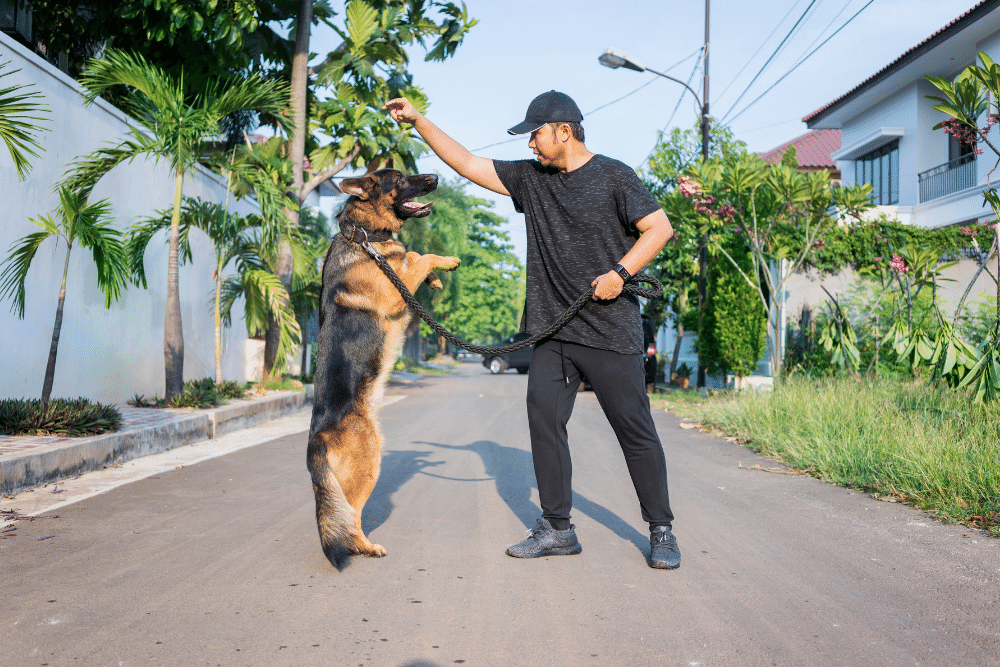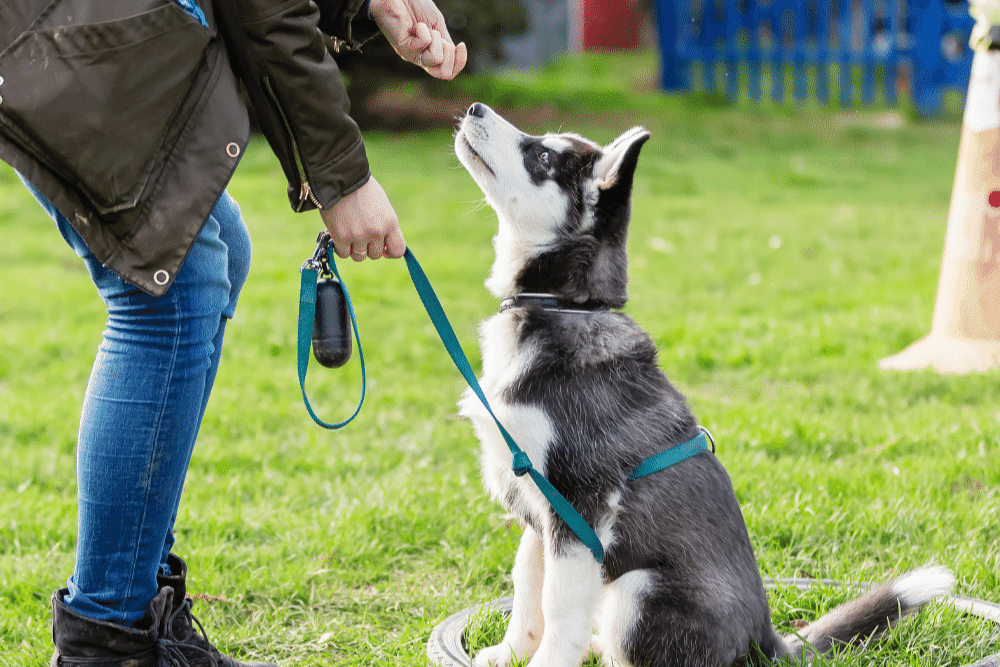Personal trainers, life coaches, consultants, gurus – seems everyone is snagging a specialty niche and personal YouTube channel. And, for every TED talk expert out there, another one is on-deck with a flip-side way of doing things. Dog trainers and dog training methods are no different.
Gone are the days when dogs were free-roaming adjuncts to the family home, content with grocery kibble and a thick-walled doghouse outside. At some point they discovered couches and real food, and humans gave in and installed doors just for them.
As dogs have become a more central and integrated part of our lives, our approaches to training them have likewise evolved.
While the list of various training methods is extensive, we’ve decided to break down the major approaches.
In general, dog training – whether for potty training, behavior modification, or tricks – falls under one or a combination of three styles:
- reward-based
- punishment-based
- neutral
With that in mind, here are the 7 top dog training methods in use – by themselves or in combination – today:

The 7 Top Dog Training Methods
-
Positive reinforcement training:
Contrary to how the name sounds, the positive reinforcement method of dog training isn’t about being a Pez dispenser of treats and praise.
It is, however, about directing your energy – and specifically your reinforcement – toward what your dog does right.
Of all the various dog training methods and their sub-categories, positive reinforcement is the approach that creates the happiest, most confident dogs.
Based on classical and operant conditioning, this training method utilizes verbal cues, hand signals, clickers, and toys to “direct” dogs into desired behaviors.The absence of force or punishment also helps to create a happy, trusting bond between dog and human.
It focuses on rewarding (with a dog treat, favorite toy or activity, affection, enthusiastic praise) desired behaviors, while ignoring undesired behaviors.
The benefit?
As with human children, the reinforcement of good behavior increases the likelihood that it will be repeated.
Think about it: What jokes does a comedian continue to tell? Those that fall flat or those that have the audience laughing out of their seats?
Research is increasingly suggesting that positive reinforcement creates the fastest, most consistent, confident results.
There are, however, limits to the benefits and applications of positive reinforcement. You can read some of the cons here.
-
Alpha dog/dominance/compulsion training:
The dominance method of training became widely popularized by celebrity trainer Cesar Milan.
Cesar’s approach to all things “dog” is/was based on the belief that wolves (and therefore dogs) operate in a natural pack hierarchy. One alpha, followed by beta and omega members.
Each has understood duties within and for the pack – protection, provision, leadership, etc.
Cesar’s approach to dog training flows from his cardinal rule: You are the alpha.
Critics of Cesar’s methodology claim his approach is based on misappropriated and wrongly extrapolated research with captive wolves.(Wolves do not, in fact, fight for dominance in the wild. They live very similarly to human families. The parent pair mates for life – a one-up on humans – and provides for and protects the others in its care.)
Dominance training uses tactics like punishment and “pinning” to establish and reinforce the alpha-submissive relationship.
But fear, according to critics and current research, does not instill obedience, let alone respect and confidence.
To the contrary, the fear- and dominance-based training methods advocated by trainers like Cesar Milan have been found to be cruel and outdated.Dogs trained in this way can end up timid, anxious, and lacking confidence when it comes to taking risks and trying new things.
-
Scientific training (classical and operant conditioning):
If you’ve spent any time in a college psychology lab, the word Pavlovian will ring a bell.
Speaking of ringing bells….
Ivan Pavlov was the researcher responsible for what became commonly known as Pavlov’s Dogs.
His groundbreaking experiment was based on 5 components:
the doggos (obviously)
the unconditioned response (salivation)
the unconditioned stimulus (sight/smell of food)
the conditioned stimulus (ringing a bell when presenting food)
the conditioned response (salivation when hearing the bell)The Pavlovian study is the classic example of, well, classical conditioning: associating an involuntary response to a stimulus.
In addition to training and reinforcing desired behaviors, classical conditioning can be a good strategy for helping with counter-conditioning.By changing the emotion around a stimulus or experience, fear-based or traumatized dogs can learn to have neutral or even favorable responses to previous triggers.
Operant conditioning, on the other hand, involves the association of a voluntary behavior with a consequence (such as a reward/incentive).
Clicker training, for example, is a positive reinforcement method based on classical conditioning. The sound of the clicker becomes associated with the smell/taste of food.Once this association is established, however, the clicker can be used in operant conditioning to more expediently train and reinforce desired behaviors, including tricks.
Think canines are the only animals drooling and spinning at the sound of a clicker? Read here for a fascinating surprise.

-
Enrichment:
The idea of exercising a dog’s mind as a method of training is relatively new in mainstream training.
However, what once would have sounded crazy or over-theoretical is now proving to have developmental and behavioral benefits.
It’s also proving to thwart what is so often at the root of undesirable, “dog-shaming”-worthy behavior: boredom.
Enrichment toys and exercises are designed to encourage a dog to figure things out on his own and to earn rewards in the process.One of the most common enrichment tools is a feeding puzzle. Instead of simply laying down the dinner bowl and letting your dog gobble-and-go, feeding him in a “puzzle” changes the narrative.
For one thing, you slow down his eating, which is especially critical for breeds prone to bloat.
Another benefit, just as with human children, is the development of neural connections as your dog “figures out” how to get the reward. Remove a piece. Flip a lid. Slide a door. Spin one layer over another.
Brain teasers aren’t only fun and time-consuming, they expend energy and build confidence, especially during the early months of life. -
Electronic training:
Electric collars (e-collars), bark collars, electric fences – all these devices use an “unpleasant” or “annoying” external stimulus to train, correct, and control behavior.
Few training methods are as ethically controversial as the use of electronic devices.
The greatest danger lies in unknowledgeable, inexperienced owners and handlers using them to punish or curtail unwanted behaviors.
However, experienced proponents of e-collars can vouch for both the advancement of the devices and their efficacy in potentially dangerous situations.
The underlying premise of electronic dog training is the ability to correct or guide a behavior from a distance.
This is not, however, a method that new dog owners or inexperienced trainers should use in their training. And it should never be the primary form of training. -
Mirror Method training
The Mirror Method, also called the Hungarian clicker dog training method, is a very specific form of positive-reinforcement training.
It’s based on the idea that your dog feeds off your energy and instinctively wants to “be like you.”
The method involves a clicker, but not simply in the classical conditioning manner listed above.
Because its premise is one of mimicking your behavior and even emotional state (such as anxiety), you and your dog need to be together almost all the time.
The training is deeply relationship-based and completely positive (with no negativity or punishment) and allows your dog as much exercise of his natural instincts as possible.
-
Relationship-based training:
Of all the dog training methods, relationship-based training focuses first and foremost on (as it sounds) the relationship between you and your dog.
If you were raising a human child, you would (hopefully) naturally care about the underlying reasons and motives for your child’s behaviors. Your interactions would be based on seeking to shape behaviors through understanding and trusted communication.
Relationship-based training for dogs takes more patience than other training methods. It utilizes multiple styles, based on the personal relationship you have with your dog. And it’s personalized to your dog and his personality and needs.

Dog Training Methods: Key Factors
When it comes to choosing from various dog training methods, consider several key factors:
- your dog’s breed, age, and temperament
- any special tasks or goals expected from your dog (show dog, herding, hunting, service dog, military, agility, etc.)
- your environment (house, apartment, yard, urban, rural, kids, other dogs/pets)
- the kind of relationship you want to have with your dog (cuddly housepet, hiking/exercise buddy, emotional support, medical service, go-everywhere-together companion)
- available time and money
Lead with love.
Exercise patience.
Remember that dogs don’t know human language until you teach them to associate it with their experiences.
And, above all, remember that training is a way of life, not a limited, roll-over-and-out education.









